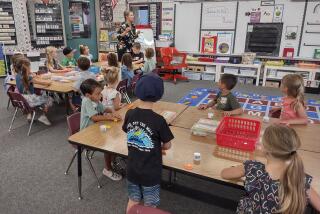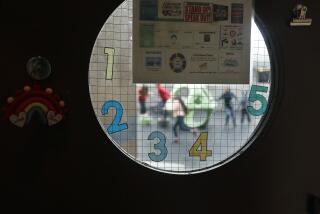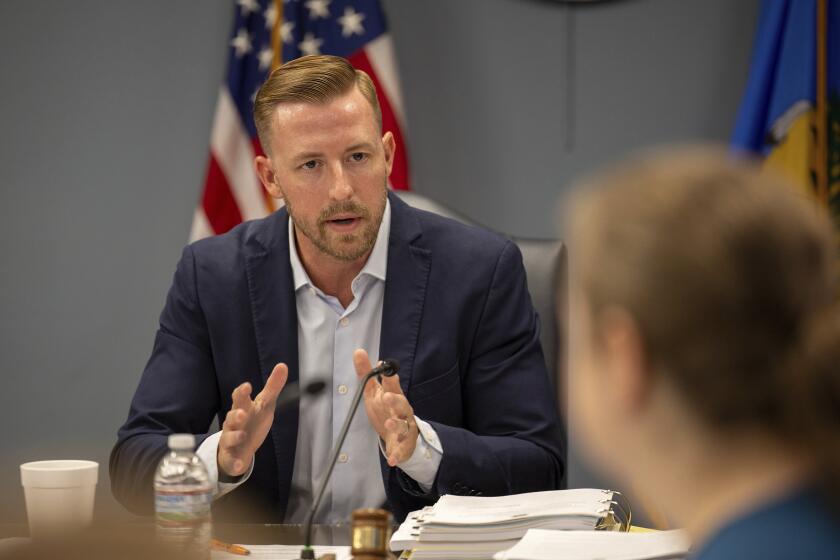Tooth decay still plagues California kids nearly a decade after Medi-Cal promised change

Eight years after an independent state watchdog agency harshly criticized the state for failing to provide dental care to low-income children, California has failed to remedy the problem or fully implement the commission’s recommendations, according to a follow-up review published last week.
The Little Hoover Commission found that less than half of the children in Medi-Cal received an annual dental visit in 2022 — 3% higher than when the initial report was released in 2016, which implored the state to do more to ensure that children have access to needed care.
“California is still doing a miserable job,” said Pedro Nava, chair of the commission and a former member of the state Assembly. “We have failed generations of children. We and they deserve better.”
The 2016 report was one of the most scathing reports that the commission had generated in years, Nava said. It found that only 44.5% of children in the Medi-Cal program had a visit with a dentist in 2016, a key indicator of whether children are receiving the care they need to prevent painful dental decay, and recommended that the state increase the rate to 66%. Lawmakers responded with a law requiring the health department to set a target of at least 60% of children.
California ranks among the worst states for kids’ teeth with a lack of care partly to blame. With candy everywhere, Halloween is an extra scary time.
Last fall, after the publication of an L.A. Times story on high rates of dental disease among California children, the commission initiated a follow-up review of the state’s progress.
It found that the state had fallen far short of the goal; in 2022, the most recent data provided in the report, 47.6% of children with Medi-Cal visited a dentist, a 3-percentage-point increase from 2016.
“If you were an investor in a private company, and that was the best they could do, you’d sell your stock and invest it somewhere else,” Nava said. “It is a disappointment that low-income families with children have to shoulder the burden of this every day.”
Engage with our community-funded journalism as we delve into child care, transitional kindergarten, health and other issues affecting children from birth through age 5.
California has made some improvements since 2016, the report said, fully implementing one recommendation and partially implementing seven of the commission’s eight others.
The state health department, however, disputes those findings and said they have fully implemented all of the recommendations from the 2016 report. The percentage of kids going to the dentist had been increasing significantly, they said — up to 49.6% in 2019 — but the pandemic interrupted that growth.
“California, along with every other state in the nation, was profoundly impacted by the effects of the COVID-19 pandemic. Virtually every state within the U.S. decreased and had a recovery period that lasted at least two years to return to pre-COVID figures,” the Department of Health Care Services wrote in a statement provided to The Times.
Since 2016, the department has made a number of important changes, the department wrote, including expanding the use of tele-dentistry to reach members across the state, increasing provider networks and creating a public education and outreach media campaign for Medi-Cal patients and providers.
In 2023 the percentage of children who visited the dentist “recovered to 2019 levels. Even higher utilization is projected in 2024,” the health department said, although data have not been been released on this upward trend.
“I don’t think this response really questions the fact that they have not come close to reaching the recommendation set by the Legislature of 60% of kids getting in to see the dentist, let alone our rate of 66%,” said Ethan Rarick, executive director of the Little Hoover Commission. “Kids’ dental health is among the worst in the country, and much more needs to be done.”
These dental recommendations can help you avoid the brunt of sugar’s impact year-round. Help keep your kids’ teeth healthy.
California children have among the worst rates of dental disease in the nation. A national survey from 2020 to 2021 found that 14.8% of the state’s children ages 1 to 17 had decayed teeth or cavities in the last 12 months studied — ranking 47th out of 51 among all the states and the District of Columbia, with only Louisiana and Wyoming faring worse. “I don’t understand,” Nava said. “If you’re the fifth-largest economy in the world, you ought to be a leader in children’s health.”
Nationwide, more than half of children develop cavities by the age of 8, usually because of poor nutrition, bad hygiene habits or a lack of dental care.
The reality of dental disease can be devastating to children, causing pain and difficulty eating, sleeping and focusing in school, and low-income children of color are at greatest risk. L.A. County’s Smile Survey, which was conducted by the public health department, found that on any given day, more than 4,500 Los Angeles County kindergarten and third-grade children need urgent dental care, which means they may be experiencing mouth pain or a serious infection.
The state increased the payment rate for evaluating a child’s teeth, for example, from $15 to $45, and up to $100 if a dentist sees the same child two years in a row, according to the California Dental Assn. The reimbursement for a filling increased from $48 to $67.20. These rate increases were funded by Proposition 56, a 2016 tobacco tax that raised money for Medi-Cal payments, and by CalAIM, a state initiative to transform Medi-Cal. The Proposition 56 money was also used to fund county oral health plans and repay student loans for new dentists.
The state has made it easier for dentists to enroll as Medi-Cal providers by simplifying the enrollment forms and putting them online, the report said. It also began a pilot program for telehealth to help bring care to healthcare deserts through the Dental Transformation Initiative.
When Medi-Cal patients phone for help with insurance coverage, they routinely face waits of nearly an hour — and are regularly disconnected before reaching anyone.
Between the Medi-Cal payment rate and fewer administrative burdens, dentists appear to have taken note: 40% of all California dentists in the state now take Medi-Cal, a 34% increase since 2017, according to the dental association.
“The program had such a huge hole to dig out of, and COVID really derailed everything,” said Brianna Pittman-Spencer, senior director of government affairs at the California Dental Assn. “There have been improvements but obviously still a long way to go for the impact we want.”
Eileen Espejo, who leads the oral health project at Children Now, said she was pleased to see that the state had at least started to implement most of the recommendations, but that the numbers suggest the approach may not be working. “If we’re going to do better, it doesn’t seem like we should do more than the same,” she said.
Help young kids learn to read with expert advice. Find literacy tips and tricks along with book recommendations for parents and educators in the reading guide.
In particular, she worries about children in far northern counties and those bordering Nevada, where dentists are hard to find. Twenty-one counties have five or fewer dental providers that take Medi-Cal, the report found. “How are we going to get providers to live in parts of the state where they aren’t yet?” she asked, adding that using more telehealth dentistry and allowing dental hygienists to provide more care could be part of the solution.
“Hopefully this report will light a fire and get more people engaged,” Espejo said. “I certainly think it opens the pathway for advocates to ask for more resources to help improve the program.”
This article is part of The Times’ early childhood education initiative, focusing on the learning and development of California children from birth to age 5. For more information about the initiative and its philanthropic funders, go to latimes.com/earlyed.
More to Read
Sign up for Essential California
The most important California stories and recommendations in your inbox every morning.
You may occasionally receive promotional content from the Los Angeles Times.















